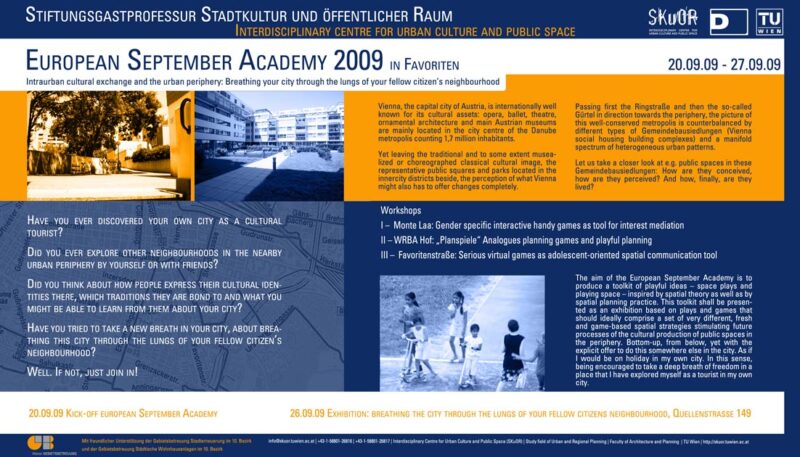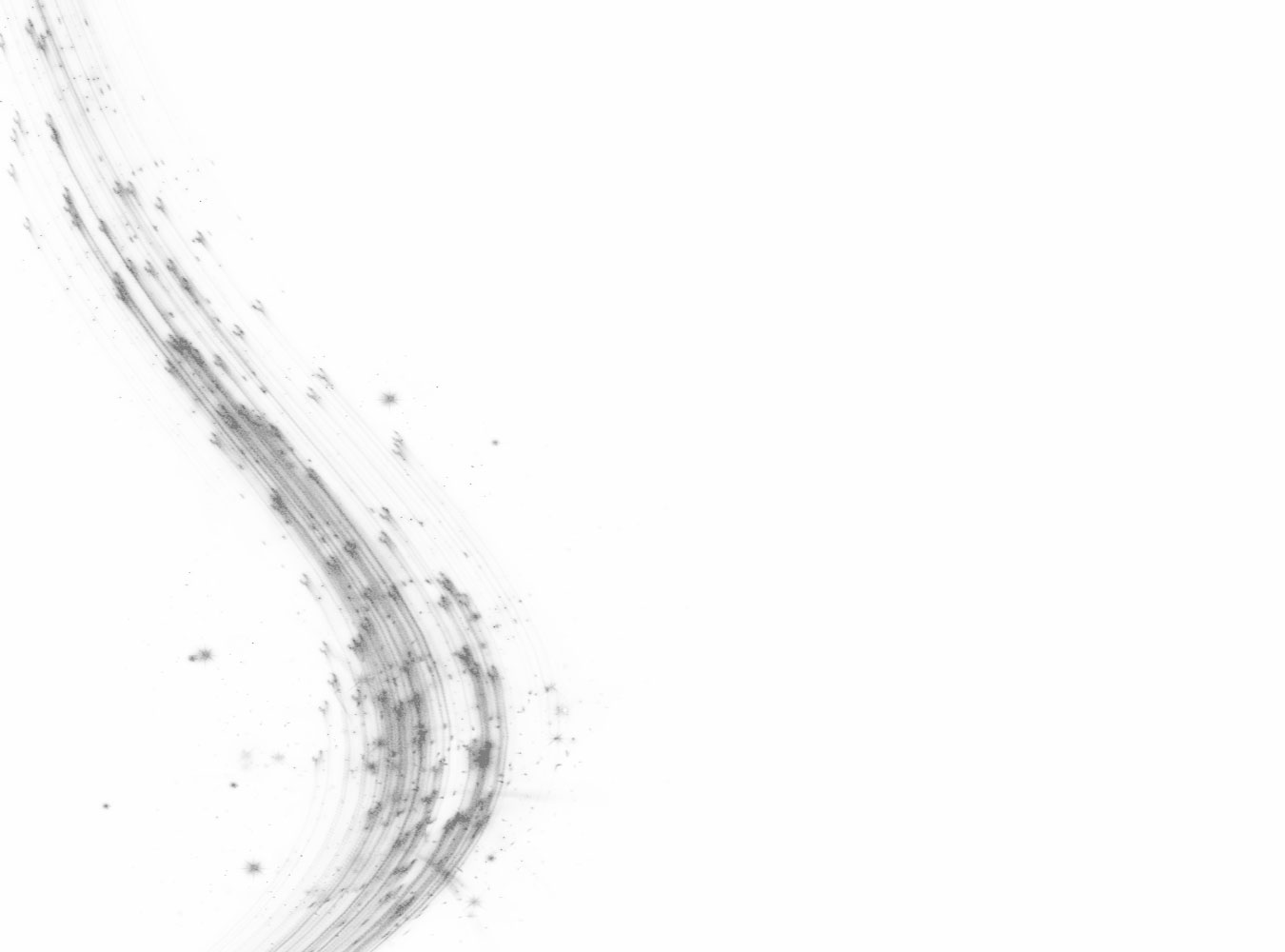09/2009:
„European September Academy“
Favoriten Vienna
20 September – 27 September 2009
Intraurban cultural exchange and the urban periphery: Breathing your city through the lungs of your fellow citizen’s neighbourhood

Topic
Have you ever discovered your own city as a cultural tourist? Did you ever explore other neighbourhoods in the nearby urban periphery by yourself or with friends? Did you think about how people express their cultural identities there, which traditions they are bond to and what you might be able to learn from them about your city? Have you tried to take a new breath in your city, about breathing this city through the lungs of your fellow citizen’s neighbourhood? – Well. If not, just join in!
Vienna, the capital city of Austria, is internationally well known for its cultural assets: opera, ballet, theatre, ornamental architecture and main Austrian museums are mainly located in the city centre of the Danube metropolis counting 1,7 million inhabitants. Yet leaving the traditional and to some extent musealized or choreographed classical cultural image, the representative public squares and parks located in the innercity districts beside, the perception of what Vienna might also has to offer changes completely.
Passing first the Ringstraße and then the so-called Gürtel in direction towards the periphery, the picture of this well-conserved metropolis is counterbalanced by different types of urban patterns (Gründerzeitquartiere, Gemeindebausiedlungen as well as private housing complexes) and a manifold spectrum of heterogeneous urban patterns. Let us take a closer look at e.g. public spaces in the Viennese district Favoriten (10th): How are they conceived, how are they perceived? And how, finally, are they lived?
Talking to people involved in urban regeneration and interest mediation Wien-Favoriten, one realizes the mere heterogenity of cultures, mentalities and ways to live urban space. Collective cultural habits are challenged especially in public spaces within such a high-density urban area as Favoriten (170,000 habitants). Indeed, public spaces sometimes represent the only sphere were different cultural groups might be able and allowed to express their cultural identities, norms and rituals such as having an extended family barbecue or a Styrian folklore choir meeting. Public spaces might serve as well for finding one’s spatial privacy, if the family shares few square metres to live. As consequence, public spaces in the Viennese district of Favoriten (as elsewhere) have increasingly become places of cultural appropriation and cultural contestation.
Publications
To summarize:
The aim of the European September Academy is to produce a toolkit of playful ideas – space plays and playing space – inspired by spatial research theory as well as by spatial planning practice. This toolkit shall be presented as an exhibition based on plays and games that should ideally comprise a set of very different, fresh and game-based spatial strategies stimulating future processes of the cultural production of public spaces in the periphery. Bottom-up, from below, yet with the explicit offer to do this somewhere else in the city. As if I would be on holiday in my own city. In this sense, being encouraged to take a deep breath of freedom in a place that I have explored myself as a tourist in my own city. Model In order to achieve the main goals of the Interdisciplinary Centre of Urban Culture and Public Space, namely the establishment of a trans-European network of universities and schools that focus on the theme of “Urban Culture and Public Space”, together with the promotion of interdisciplinary work and co-operation, the European Septemer Academy aims at bringing together students in spatial planning, architecture and other spatially relevant disciplines from different European universities. The model is designed for an approx. number of 25 to 30 bachelor, master and PhD students in total that are going to work together in Vienna for one week. Basically, the model is designed for the participation of different universities, each of them participating with up to five students in the one-week workshop in Vienna. The selection procedure of the five students is up to the respective university. The Summer Academy is to establish itself as an annual fixed element. In conjunction with several other universities, the TU Vienna will act as a ‘bridge’ between spatial planning and spatial research. In order to achieve a homogenous mix of schools, there should be some universities which focus on spatial research (disciplines such as sociology, geography, urbanism..), and some universities which focus on spatial planning and design (disciplines such as landscape architecture, urban planning, spatial planning, architecture, urban development and art…). In addition, in selecting the universities, special attention will be paid to cultural diversity. For this reason the invitation will be addressed to universities in different European countries, whereby the relationship between various countries and disciplines should be balanced. The working language of the European September Academy will be English. Students may enrol for this course at the TU Vienna. Attendance of the summer workshop will be likely credited with 3,5 ECTS. In this context, foreign students enrol at TU Vienna in agreement with the direction of the Interdisciplinary Centre for urban Culture and Public Space.
